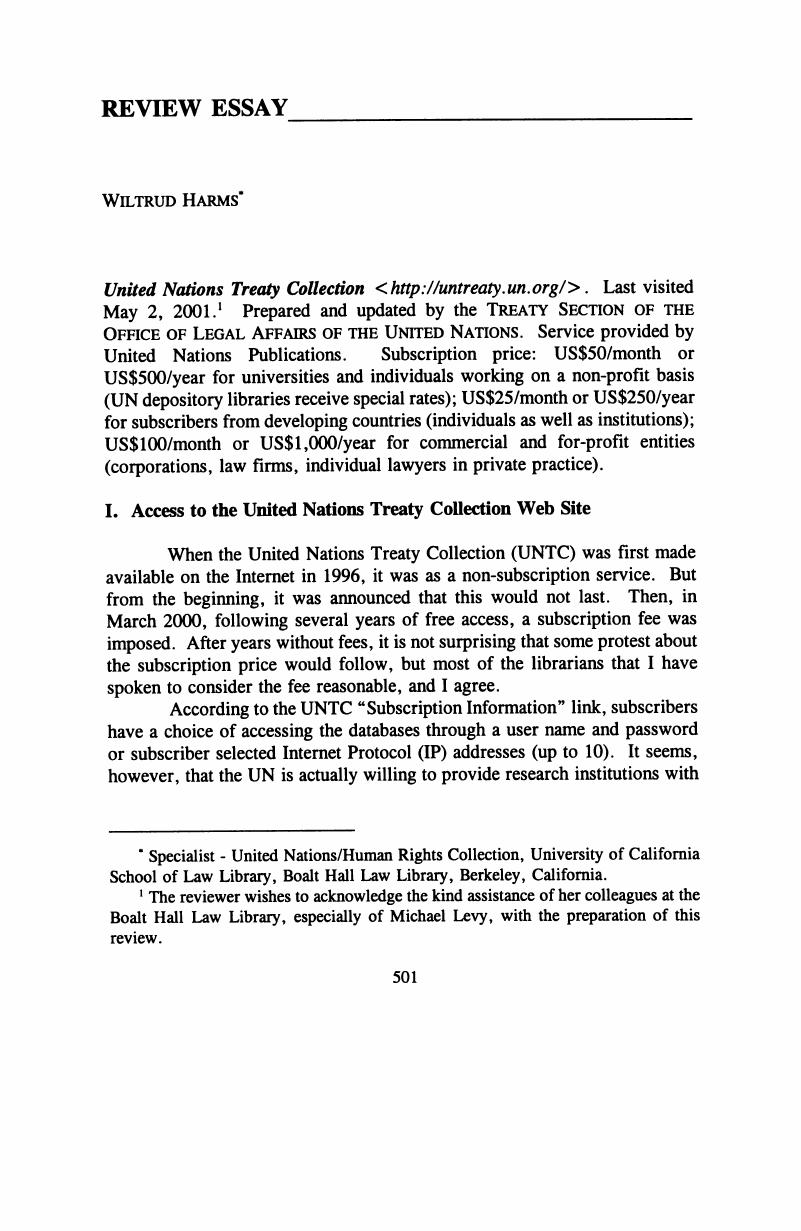
1 The reviewer wishes to acknowledge the kind assistance of her colleagues at the Boalt Hall Law Library, especially of Michael Levy, with the preparation of this review.Google Scholar
2 This resolution is the key to an understanding of the work of the Treaty Section in regards to the registration of treaties and related actions, and their subsequent publication in the UNTS, as well as to the publication of status information for multilateral treaties deposited with the UN Secretary-General. Purpose, contents and search features of all UNTC databases will be better understood after a careful reading of the resolution.Google Scholar
3 The official title is Treaty Series: Treaties and International Agreements Registered or Filed and Recorded with the Secretariat of the United Nations. Google Scholar
4 This and other helpful information was provided by the UN Treaty Section Staff whose assistance in the clarification of several questions is gratefully acknowledged.Google Scholar
5 For those who have not had a chance to browse such a huge series of printed volumes, here are some numbers that may put things into perspective. All published UNTS volumes at my library currently take up almost 10 book sections (about 60 regular sized book shelves). Thus the volumes contained in the UNTS database at the present time would amount to approximately 9 1/2 book sections.Google Scholar
6 A case in point: most users would think it reasonable to enter title words such as: “optional,” “protocol,” “covenant,” “civil,” and “political” in the “Title/Key word” field of the “Basic Search” screen and then expect to retrieve the text of the “Optional Protocol to the ICCPR.” It does not work. However, repeating the search on the “Advanced Search” screen (leaving other fields untouched) retrieves a long list of treaty entries, the first of which (labeled “subsequent agreement”) will lead to the sought after text of the Optional Protocol. It took me quite a while to understand why the “Basic Search” does not work here – the Optional Protocol is classified as a “subsequent agreement” to the Covenant, and the “Basic Search” retrieves solely “original,” not “subsequent” agreements.Google Scholar
7 For example, if we want to find the text of the reservations made by Italy upon ratification of the International Covenant on Civil and Political Rights, we can enter into the “Title/Key word” field: covenant civil political reservation Italy, select “Match all these word” and hit “Search UNTS”: it will retrieve three entries, the first of which will lead us to the instrument of Italy's ratification (which includes the full text of the reservation).Google Scholar
8 In order to address these issues the UN is planning to upgrade its Internet infrastructure within the next six months, including installation of a powerful server to meet the heavy demands on the treaty database. Treaty Section staff also mention longer term projects to incorporate the full text of treaties in image format into the UN's internal treaty database and to allow for direct, and therefore quicker, access to this internal treaty database.Google Scholar
9 For example, we can find the status information for the Convention on the Rights of the Child in Chapter IV.11. of this database. The link from the UNTS citation (Vol. 1577, p.3) does not retrieve the text of the convention because it is not contained in the UNTS database yet, although it was published in the print version in 1999.Google Scholar